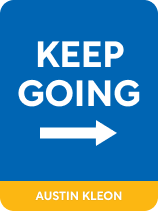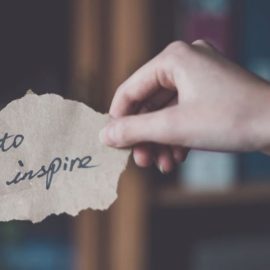

This article is an excerpt from the Shortform book guide to "Keep Going" by Austin Kleon. Shortform has the world's best summaries and analyses of books you should be reading.
Like this article? Sign up for a free trial here .
What is the key to staying in the moment? What are the benefits of living in the present?
In his book Keep Going, Austin Kleon says that to have a healthy creative process, you need to stay in the moment. His advice can also apply to anyone outside of the creative field.
Learn how to stay in the moment by following Kleon’s three guidelines.
How to Stay in the Moment
Kleon suggests that to ensure a healthy and productive creative process, you must stay in the moment. Learning how to stay in the moment prevents you from thinking too much about the past or worrying about the future—this way, you can focus entirely on thinking of new ideas and putting them into your work.
(Shortform note: Psychological research supports Kleon’s suggestion that staying in the moment stimulates creativity. A survey of various studies found a positive correlation between mindfulness (or being aware of what you’re thinking and doing in the present) and creativity.)
Kleon provides three guidelines for staying in the moment:
- Take things one day at a time.
- Make a creative space.
- Slow down.
We’ll now explain how these guidelines help you stay in the moment.
Guideline #1: Take Things One Day at a Time
Focusing on one day at a time helps you stay in the moment in two ways:
- It prevents you from thinking too far ahead since you’ll focus only on what you’re doing within a given day.
- It keeps you from dwelling on the past—you’ll focus on what you can do now rather than what you should have done previously.
(Shortform note: In addition to helping you stay in the present, taking things one day at a time can also help reduce stress in the future. Dale Carnegie (How to Stop Worrying and Start Living) explains that worrying about the future or being angry about the past takes up time and energy. If you instead use that extra time and energy on your work in the present, you’ll get more done and therefore will have less to do (and less to be stressed about) later on.)
To approach your life and work one day at a time, Kleon suggests you create consistent routines.
Guideline #2: Make a Creative Space
Staying in the moment isn’t just about what you do on a given day—it’s also about where you do it. Kleon suggests you can help keep yourself in the moment by using a specific place for your creative work. Ideally, this space should allow you to block out external distractions and stimulate your creativity.
(Shortform note: In addition to simply having a separate creative workspace, psychological research suggests that there are many benefits of having control over the design of this space. Studies found that those who can design their own workspaces aren’t just more creative—they also tend to be happier, healthier, and more productive.)
He says the ideal creative space has two main qualities: solitary silence and creative messiness.
Guideline #3: Slow Down
Kleon’s third guideline for staying in the moment is slowing down the rate at which you receive information. This will make it easier to focus on the present instead of thinking about what comes next.
(Shortform note: Kleon mostly talks about slowing down in terms of thought and information, but psychologists suggest that slowing down your physical actions can also reduce anxiety. A common example of this phenomenon is breathing exercises: focusing on taking slow, deep breaths to reduce anxiety.)
Kleon provides two methods for slowing down your life: exploring the mundane and limiting your news and media intake.

———End of Preview———
Like what you just read? Read the rest of the world's best book summary and analysis of Austin Kleon's "Keep Going" at Shortform .
Here's what you'll find in our full Keep Going summary :
- How to stay creative even when you feel stressed or burnt out
- Why the process of making art is more important than the outcome
- Why and how to make a creative space to work in






